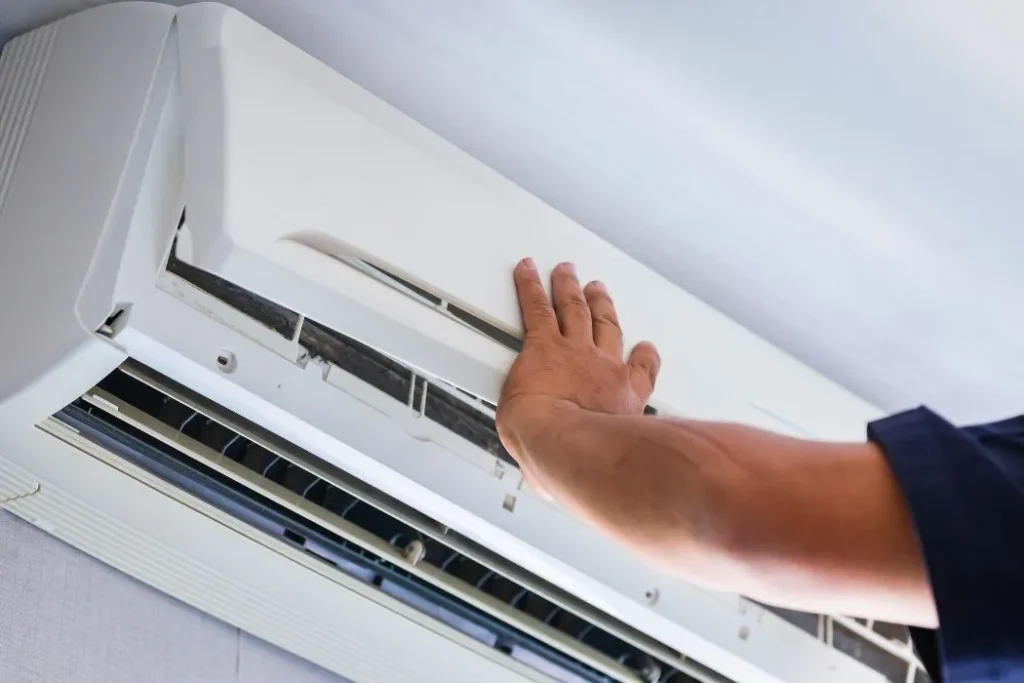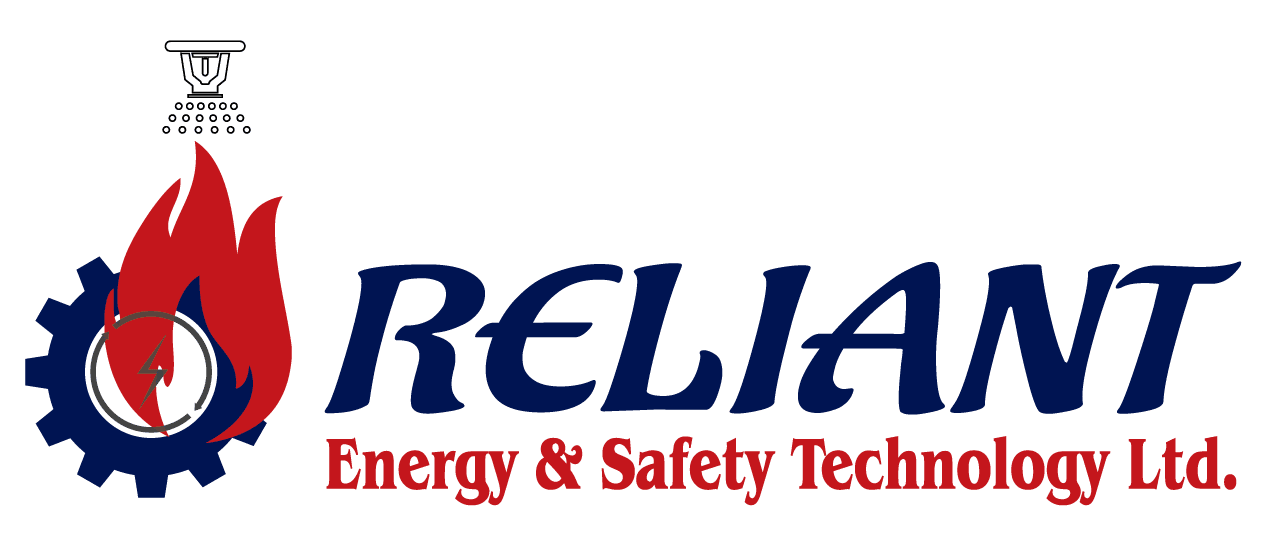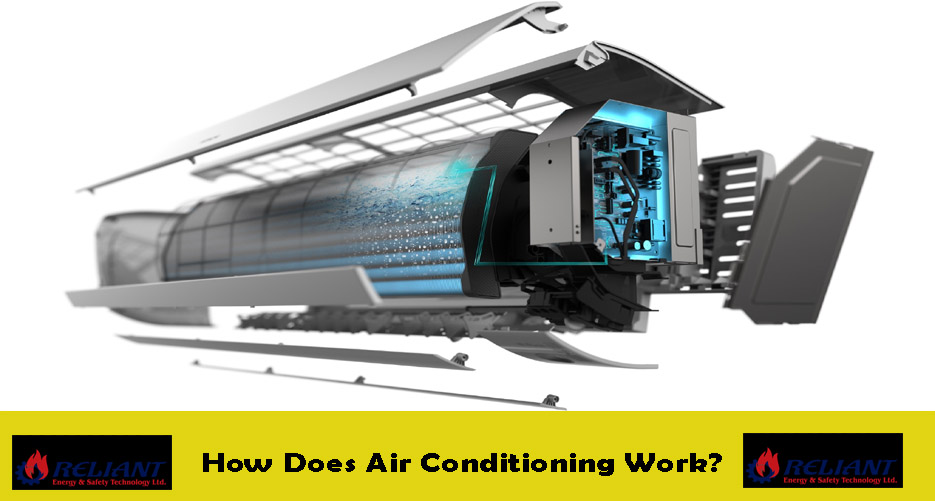Many people believe that air conditioners (AC) work by creating cold air, but that’s a misconception. Instead, an AC system removes heat from your indoor environment and transfers it outside. Let’s break down the process of how air conditioners function to keep your home cool and comfortable.
Air conditioning systems play a vital role in maintaining a comfortable indoor environment by controlling temperature, humidity, and air quality. These systems work by removing heat and moisture from the air and replacing it with cool, dry air to create a pleasant living or working space.
For detailed guidelines on maintaining your electrical systems, check out our Electrical System Maintenance.
Understanding the Basics of Air Conditioning
An air conditioning system relies on several essential components to function effectively:
Compressor
The compressor is the heart of the air conditioning system. It compresses and circulates the refrigerant, a chemical that absorbs and releases heat as it transitions between liquid and gas states.
Condenser
The condenser, typically located in the outdoor unit, is responsible for releasing the heat absorbed by the refrigerant. As the refrigerant passes through the condenser coils, it cools down and returns to a liquid state.
Evaporator
The evaporator, found in the indoor unit, absorbs heat from the indoor air. When warm air from the room passes over the evaporator coils, the refrigerant inside the coils absorbs the heat and removes moisture, cooling the air.
Refrigerant
Refrigerant is a crucial chemical substance that facilitates the heat transfer process. It alternates between liquid and gas states to absorb and release heat efficiently during the cooling cycle.
How an Air Conditioner Removes Heat from Your Home
The cooling process revolves around a substance called refrigerant, which flows through a closed system of coils and components to absorb heat inside your home and release it outdoors. The key stations involved in this process include:
- Evaporator Coil (Indoor Unit)
- Compressor (Outdoor Unit)
- Condenser Coil (Outdoor Unit)
These stations work together to manipulate the state, pressure, and temperature of the refrigerant, enabling efficient heat transfer.
Step-by-Step Breakdown of the Refrigeration Cycle
Step 1: Heat Absorption by the Evaporator Coil
Warm air from your home is drawn through vents and passes over the cold evaporator coil. This coil, located inside your home, absorbs heat from the air, cooling it down. The cooled air is then blown back into your home through ducts.
As the evaporator coil absorbs heat, the refrigerant inside it changes from a liquid to a gas. This gaseous refrigerant travels toward the compressor for the next step.
Step 2: Compressor Increases Refrigerant Pressure
The compressor, located in the outdoor unit, compresses the gaseous refrigerant to increase its pressure and temperature. This step prepares the refrigerant for the heat release process.
Step 3: Heat Release by the Condenser Coil
The superheated refrigerant reaches the condenser coil, which is also part of the outdoor unit. Here, the refrigerant releases the absorbed heat into the outside air. As it cools down, the refrigerant changes back into a liquid state.
Step 4: Refrigerant Returns to the Evaporator Coil
After releasing heat outdoors, the cooled refrigerant travels back to the evaporator coil inside your home to start the process again. This cycle continues until your indoor temperature matches the desired level set on your thermostat.

Different Types of Air Conditioning Systems
There are several types of air conditioners, each suited to different needs and home configurations. Let’s explore the most common types:
Split-System Air Conditioner
This is the most common type of central air conditioning system. It includes both an indoor and an outdoor unit. The indoor unit houses the evaporator coil and blower fan, while the outdoor unit contains the compressor and condenser coil.
Advantages of Split-System AC:
- Efficient cooling for the entire home
- Options for single-stage, two-stage, and multi-stage systems
- Can improve indoor air quality through filters
Packaged Air Conditioning System
Packaged systems combine all components—evaporator coil, compressor, and condenser coil—into a single outdoor unit. These systems are ideal for homes with limited indoor space.
Advantages of Packaged Systems:
- Space-saving design
- Suitable for rooftop installations
- Available in energy-efficient models
Ductless Air Conditioning System
Ductless systems consist of an outdoor unit connected to one or more indoor units through refrigerant lines. They are ideal for homes without existing ductwork or for providing zoned cooling.
Advantages of Ductless Systems:
- Flexible installation
- Individual temperature control for each room
- Energy-efficient operation
Why Choose Reliant-Est.com for Your Air Conditioning Needs?
At Reliant-Est.com, we prioritize providing clear, actionable information to help homeowners make informed decisions about their air conditioning systems. Here’s why our content and services stand out:
Expert Knowledge and Guidance
Our content is crafted by HVAC experts who understand the latest technologies and best practices. We break down complex concepts into easy-to-understand information, making it accessible for everyone.
Comprehensive Solutions for Every Home
We cover a wide range of AC systems to cater to different home sizes, locations, and cooling needs. Whether you need a split system, packaged system, or ductless AC, we’ve got you covered.
User-Focused Content
Our content is optimized for search engines, ensuring that you find the right information when you need it. We prioritize user experience by providing practical, accurate, and engaging content.
Commitment to Energy Efficiency
We emphasize energy-efficient solutions to help you save money on your energy bills while reducing your environmental impact.
Visit our detailed guide to know more about essential fire safety tips for manufacturing plants.
Conclusion
Understanding how air conditioners work can help you make informed choices about cooling solutions for your home. At Reliant-Est.com, we aim to provide the best resources and services to keep your home comfortable year-round. Explore our website to learn more about air conditioning systems, maintenance tips, and energy-saving strategies.
FAQs About Air Conditioning Systems
Q1. How Often Should I Service My Air Conditioner?
It’s recommended to have your air conditioner serviced at least once a year to ensure it runs efficiently and to catch potential issues early.
Q2. How Can I Improve My AC’s Energy Efficiency?
- Keep your filters clean
- Seal any air leaks in your home
- Schedule regular maintenance
- Upgrade to a high-efficiency AC unit
Q3. What Size AC Unit Do I Need for My Home?
The size of the AC unit depends on your home’s square footage, insulation, and layout. It’s best to consult an HVAC professional to determine the appropriate size.

